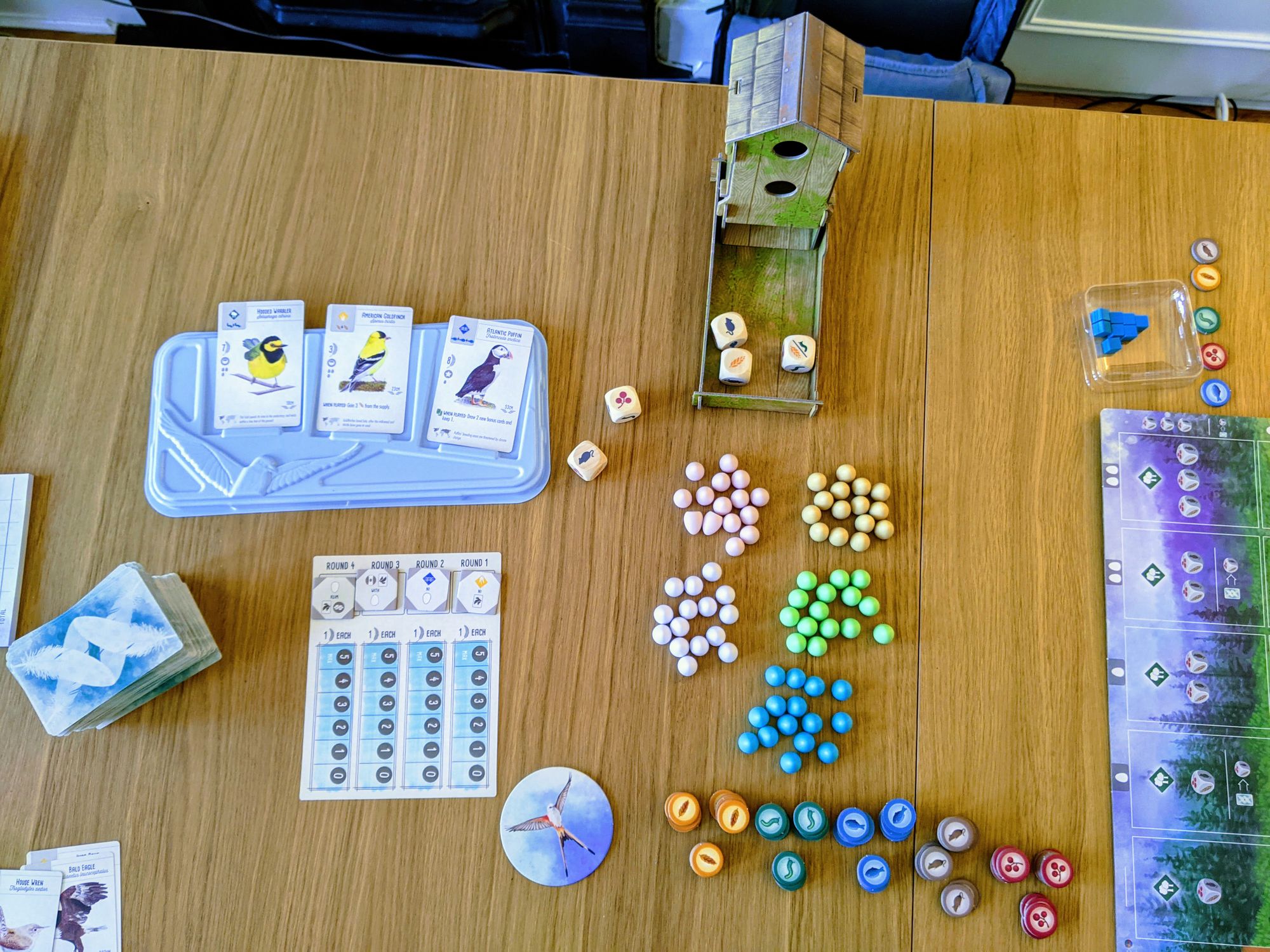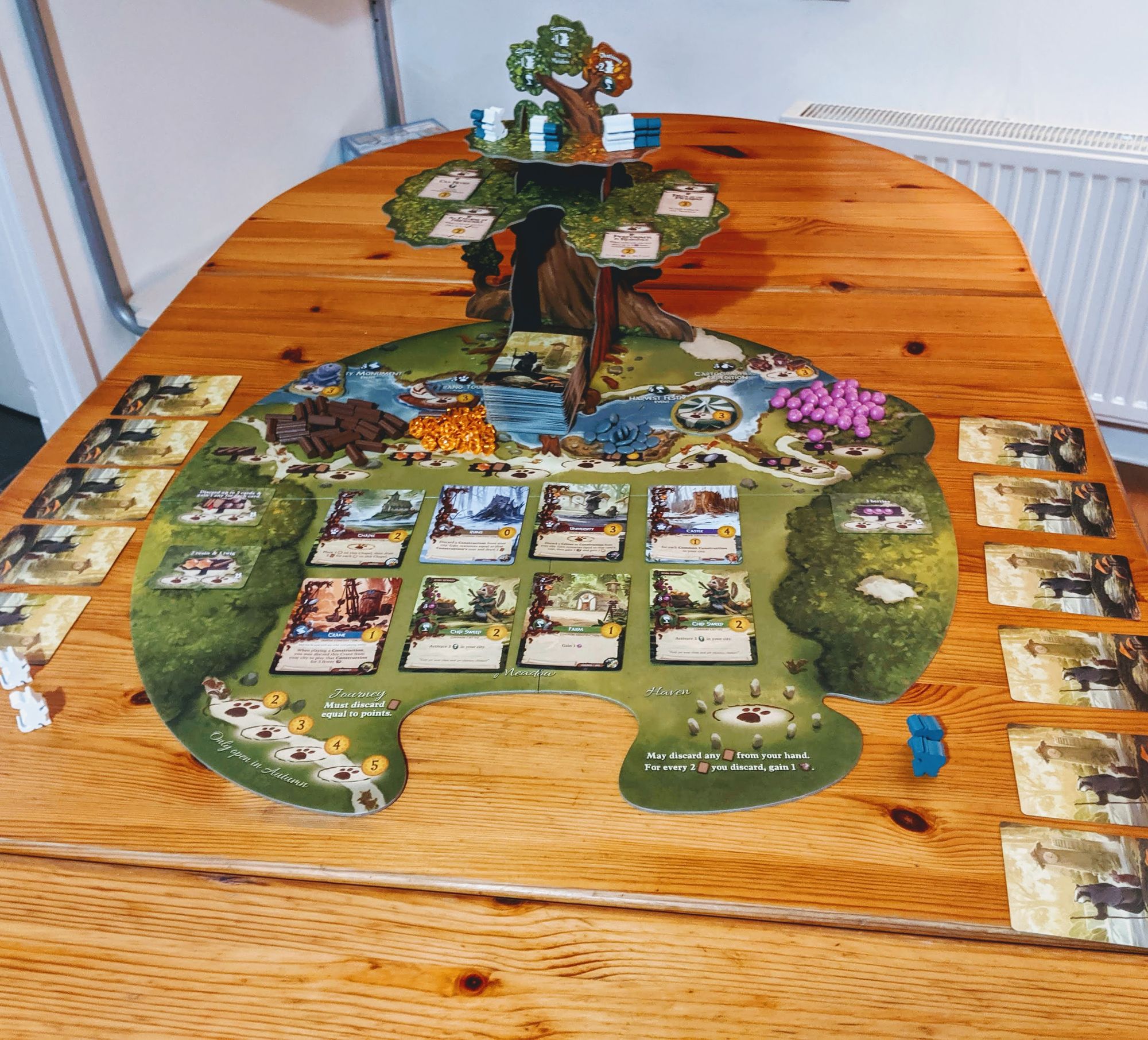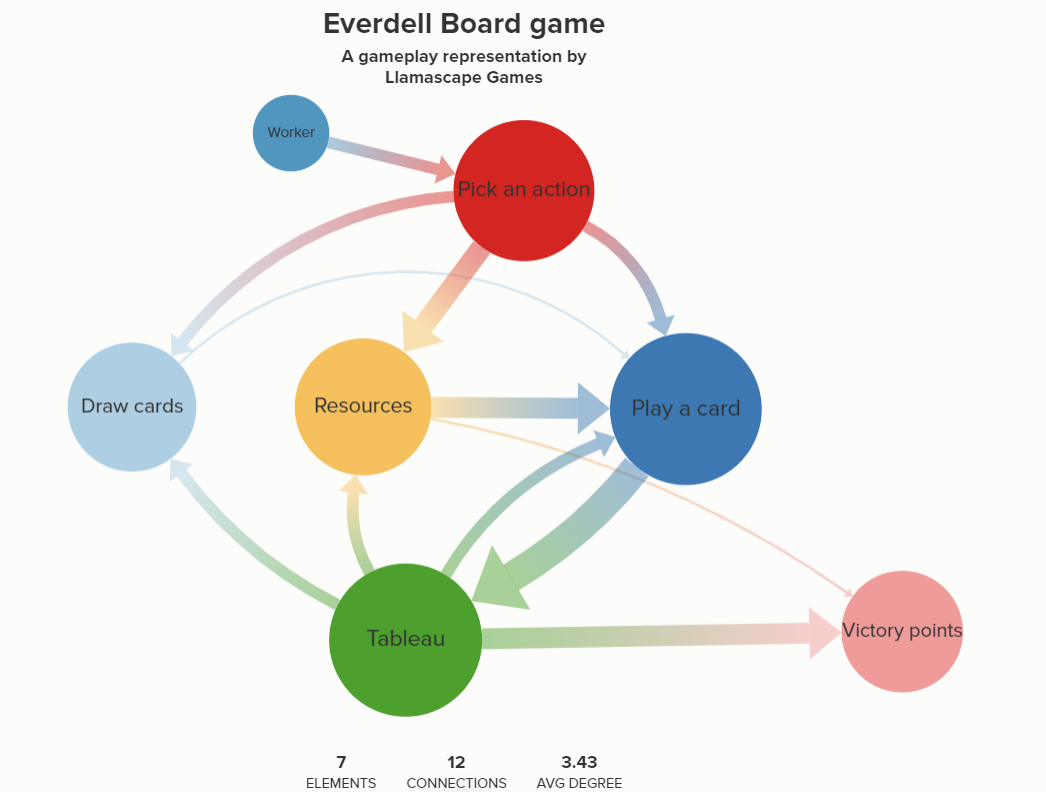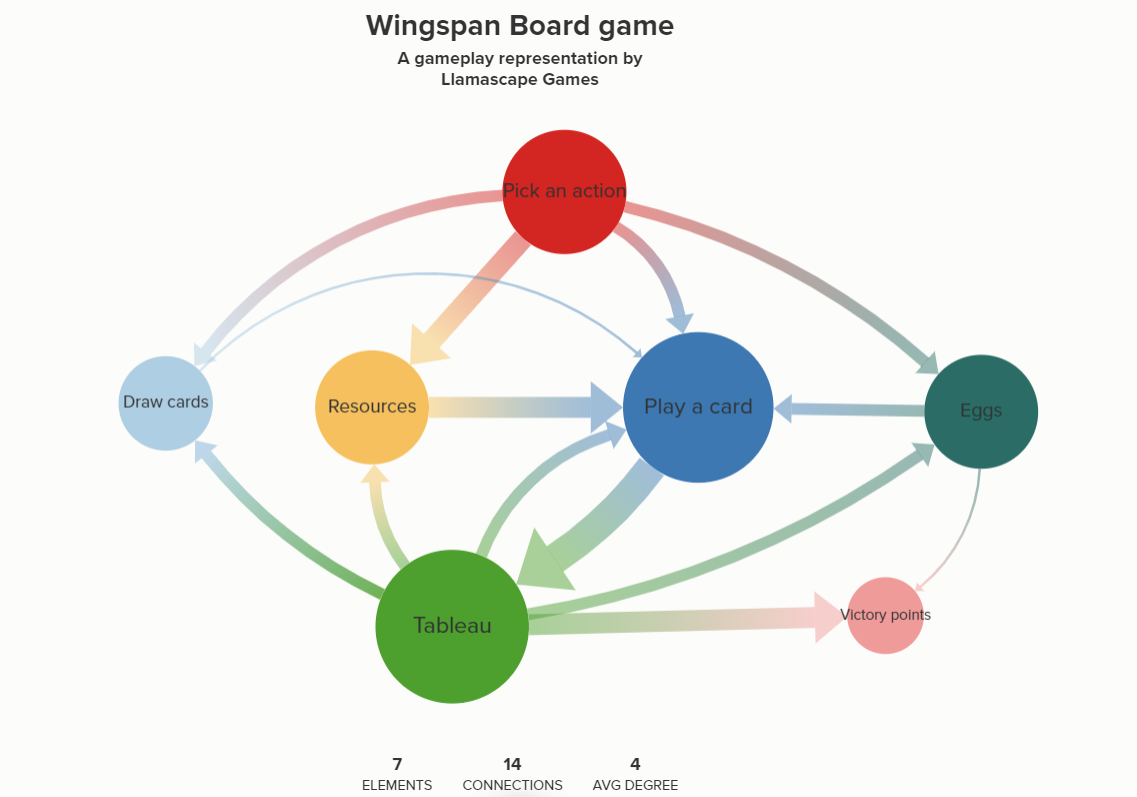Gameplay in Everdell vs Wingspan
In this post I analyze the gameplay of Everdell and Wingspan using Network Theory. It gets a bit technical at times, but trying to make it accessible!
Recently I have been playing a good amount of Wingspan, by Elizabeth Hargrave. You probably know about it, the game involves acquiring resources and collecting birds of different types in your Tableau.

After a few plays, I started noticing a similar pattern to another game I love: Everdell, by James A. Wilson. Everdell involves building a city (a Tableau), through collecting resources.

To be clear, in case you don't know either of them: the two games are definitely different in many ways. A big difference is that Everdell leverages worker placement, whereas Wingspan uses action selection - i.e. there is no competition for locations. Also Wingspan has an interesting twist in that the positioning of cards in your Tableau is very important.
Both games are great if you ask me! I find the variability in resources availability in Wingspan to be very clever, as is the chaining activation mechanics. In Everdell, I love the rhythm of a game with its increasing number of workers and the surprising depth the game has.
Having said this, I still find the two games to have some similarities - and to understand this better, I thought it'd be fun to sketch the gameplay in each of the two games.
This representation of the gameplay is necessarily highly subjective, and I'd love to get your thoughts on it.
I have tried to represented "an average" game, of course each game is slightly different.
- Nodes (the "circles") represent actions / decision points / game components
- Arrows represent gameplay linking two nodes. The size of the arrows is determined by the "strength" of their connection
- The size of a node is a representation of how important is that node in the overall gameplay
If you are curious about details of this, have a look at the end of the post, where you can also access the interactive version of the graphs.
Using the above representation, I came up with this for Everdell:

If you look at the first node ("Worker"), and for each step you follow the bigger arrow departing from each node, we can see the main game flow going like:
worker -> pick an action -> resources -> play a card -> tableau -> victory points.
Let's now take a look at Wingspan:

Let's follow the path of the big arrows again:
pick an action -> resources -> play a card -> tableau -> victory points
interestingly we come up with nearly the very same main flow we saw in Everdell!
Pending some possible confirmation bias that could have led me to fabricate this "finding", this hints that the two games have indeed some similar gameplay.
Let's look at some differences:
We can see that the flow in Wingspan has some twists - the gameplay seems to be less linear, as the different game components are more linked to each other (or rather, linked by more thick lines) than they are in Everdell.
This is well represented by the higher average degree number at the bottom of the graph. The number indicates that the average Wingspan node has more connections than the average Everdell node. That is, components in Wingspan are more intertwined to each others.
In particular, 2 aspects stand out to me:
1.🥚 Eggs . To add cards to your Tableau in Everdell, you just need to collect resources. In Wingspan, you need both resources and eggs. And the way you collect eggs, is by building the eggs track in the Tableau itself, creating a minor but important feedback loop
2.🎴 Cards . In Everdell, you have a lots of cards in your hand at the beginning, and many cards to choose from in the Meadow. Playing those cards doesn't even require an action. In Wingspan, you are more constrained in what cards are available, and if you want to build a card drawing engine to build a bespoke Tableau...you need to build the card engine track in your Tableau, which creates an interesting feedback loop.
What does this tell us
Well, being this a representation of the gameplay based on some made up assumptions, this tells us nothing for certain :)
But something interesting for me is that, if you more or less agree with the above representation, you might be inclined to think that Wingspan is more "complex" than Everdell. And to be clear, that's my perception of it.
However, players expressed a different view on BGG. At the time of writing, Wingspan has a weight of 2.42 vs 2.81 of Everdell.
This could be due to a number of reasons of course, and the topic of "game complexity" is a tricky one.
Digression about game complexity
One possible reason I see is simply the definition of "Game Weight" used in BGG: it is about understanding the game and not about how intricated the gameplay is. In this sense, surely cards in Everdell have more "individuality" to them than those in Wingspan, so you could argue it's more difficult to understand.

Another interesting observation is that these graphs don't really capture the size of the Decision space players have to parse during a game.
For example, without taking into account strategies, playing a card in Wingspan means deciding between 2 to 4 say (~ average you might have in your hand), whereas in Everdell you have way more options available. As mentioned, this is an tricky topic to discuss though, as what matters is really if there is a way (i.e. strategies) to reduce the space to some meaningful decisions.
As a further digression - imagine there are two games:
- Game A gives you 5 options to choose between, all similarly compelling
- Game B gives you 20 options to choose between, but there's a way to quickly filter out 18 of these options as bad
Which game would consider more complex? Personally, I'd feel game 1 to be more complex (and game 2 to be more engaging...I might discuss this in another post!).
Conclusions - an interesting lens to use
Personally, I like this way of looking at the gameplay. It's surely an approximation and it's not by any means a complete picture of a game.- but I think that it did offer some insights.
I'm curious to hear what do you think of this, reader?
Do you find this representation useful? Do you agree with the flow? Does the above reflect your experience?
Until next time!
Andrea
Appendix: Details about the plot for those not bored already
The underlying approach leverages some very basic concepts of network theory. As I stressed out few times, this is just a representation - that's always the case when doing modelling of any sort, but that's even more so the case here because I based the graph on some numbers and assumptions that I haven't even tried to validate (well, I'm hoping that feedback on this post will offer some inputs!).
You can see the interactive version of the two graphs here. I have used this nice software called kumu to draw the graphs (sorry mobile user, I know it doesn't render well - if you manged to scroll further you can read details of the approach):
Essentially, I thought about each game and asked myself:
- what are the components -> those define the nodes
- how do you use each node in relationship with each other -> those defined the arrows
- how well each node is connected to the other nodes determines the size of the node
- how strong is the connection between two nodes determines the thickness of the arrow. I came up with the strength based two factors:
1. How much the target node is determined by the input node.
E.g. in Everdell, we can see that both the Tableau and the resources contribute to victory points. This is because each card in the city is worth points, but also because there are ways in which resources can be turned into points (e.g. via the Monk card). However, based on personal experience, the Tableau itself tends overall to weight more towards the victory point count than the resources itself (since we have additional sources of victory points that depend on the Tableau, e.g. missions, and because exploiting resources for points itself requires a supporting Tableau in place), so I'm weighting the connection going from the Tableau to the victory points more.
2. Given the input node, how many times you follow an outgoing arrow instead of another.
E.g. again in Everdell, we can see that the node Pick an action has a stronger arrow going towards resources than the one going towards Draw cards or Play a card. This is because I feel that's the action I take more often that the others.
For a more objective picture, one would probably need to run simulations or ask for inputs from many different players. That would be awesome, but maybe I will leave it for another time :)




